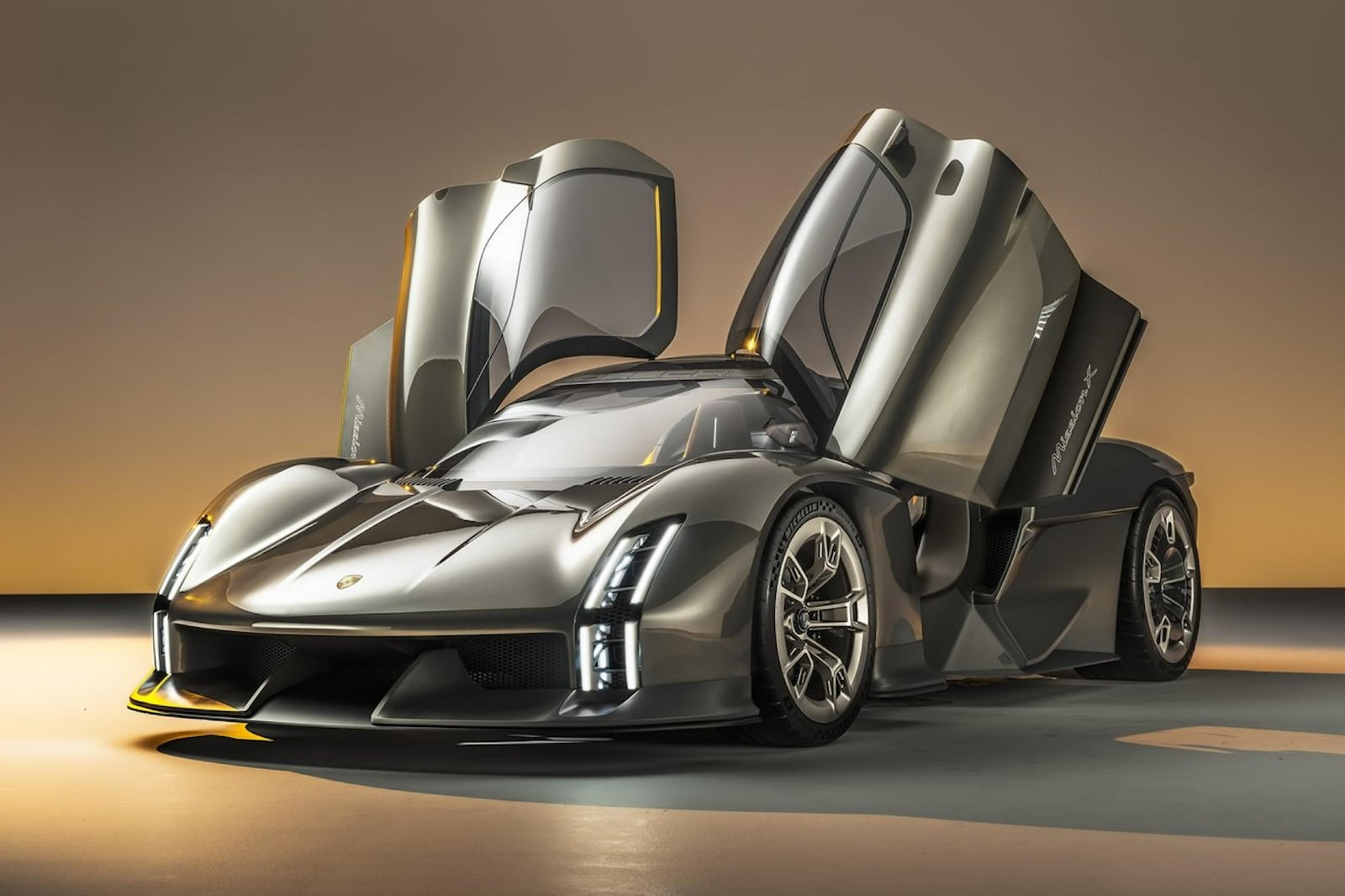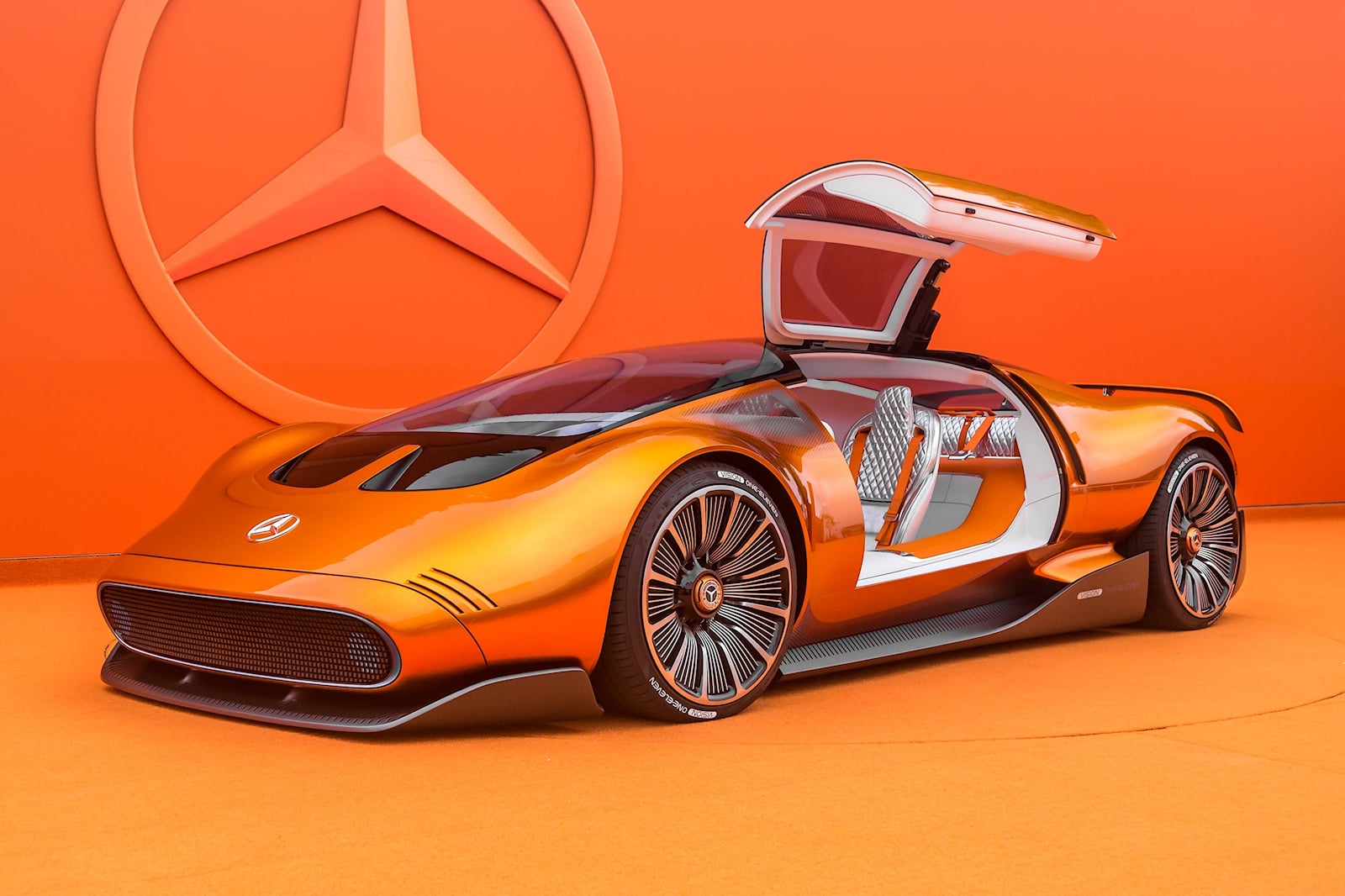This is why concept cars still exist.
The idea behind a concept car is to preview what comes next. These futuristic cars are built to gauge interest in a particular design or technology and whether the public would respond positively if certain elements were to find their way onto production cars. Sometimes, an automaker will reveal a concept simply to show what it can do, but 9 times out of 10, there's a consumer-driven motive behind showcasing something hitherto unseen.
Sometimes, only small aspects will make their way to production; other times, the entire concept carries over with minimal changes.
In a nutshell, a concept is a showcase of what the future may look like, and in many cases, all-new tech filters from concepts to production cars over the course of just a few years.
Take the W220 Mercedes-Benz S-Class, for example. It debuted in concept car form at the 1996 Paris Motor Show. Merc called it the F200 Imagination research vehicle, and at the time, it was one of the most futuristic vehicles ever made. Looking back at the overall design now, it's pretty apparent what the German brand had in mind for the future.
The F200 also had a few other futuristic elements up its sleeve. The butterfly doors would eventually debut on the Mercedes-McLaren SLR, while the smart sunroof went into production with the Maybach 62. But the most significant piece of technology that debuted with the F200 was the "forward-looking dynamic handling control system." These days we call it adaptive cruise control, and you'll find it as standard fitment on almost every car on sale today.
The F200 arguably also gave the world the first taste of autonomous vehicles. Granted, it's not nearly as advanced as the most basic autonomous mode you'll find on cars, but it perfectly illustrates why concept cars are still a thing.
In this list, we'll explore 10 futuristic concept cars and ideas showcasing tomorrow's technology.
The Tesla Cybertruck has been delayed several times, but if some of Elon Musk's claims over the years are true, it will be a revolutionary product.
On the practical side, the company announced that its truck can use the same charging network as the Tesla Semi. Delivering one megawatt via a cable isn't easy, so Tesla developed a liquid-cooled hose a human can handle. With DC charging this fast, a single charge could take less than a minute. This future technology will give the American automaker the most impressive charging network in the world.
On the less serious side, Musk claimed the truck is waterproof enough to float. We're not sure why this is useful, but at least Tesla may be able to claim that it gave the planet the first mass-produced amphibious car.
Toyota is working on a sporty electric vehicle with a manual gearbox to please the next generation of car enthusiasts. You might wonder why a car without an engine needs a manual gearbox, primarily since EVs are known for producing all their power from a single revolution per minute.
The answer is an electric car that's fun to drive. While stupid acceleration is fine, we can tell you from experience that it gets old fairly quickly. EVs of the future will need an additional layer of flamboyance once every car out there can hit 60 mph in less than three seconds, and rowing your gears is a valuable form of self-expression.
An electric motor does not need a clutch, but it can be faked. Toyota can tweak the power output of the motors using various torque profiles.
Theoretically, it should be fun enough for people not to miss the old-school combustion engine.
The Enyaq is not a concept car, but a particular one-off example based on the production car counts as a futuristic car. The Czech automaker, owned by Volkswagen, equipped its version of the ID.4 with a Human-Machine Interface (an interactive screen) mounted to the grille.
The exterior cameras are equipped with eye-tracking tech, so the car knows whether a pedestrian is looking at it or staring dumbfounded at their phone. Skoda is not the only one looking at people's corneas.
BMW filed a patent for an eye-tracking technology on the inside of the car. Now that many front passengers have their own displays for entertainment, the BMW system will track eye movements and know when the driver isn't paying attention to the road. It will then deactivate the passenger display, after which the driver will get a lecture on the importance of not trying to watch YouTube while driving.
The N Vision 74 is a futuristic vehicle that might make it into production. Or not. The answer depends on who you ask; even the bigwigs at Hyundai can't agree. Whatever the case, Hyundai has a working prototype, so it's one of the few futuristic cars that exist in the metal.
The N Vision 74 is fantastic because it's stupidly fast and efficient. As you might know, Hyundai keeps on investing money in hydrogen. Hydrogen-powered vehicles could be the future. So much so that even truck makers are interested because they take care of that pesky electric range issue.
The N Vision 74 is a hydrogen fuel cell vehicle, so it's electric. But instead of using a battery, it utilizes hydrogen to create electricity. Filling the vehicle's tank with hydrogen takes the same time as regular refueling. And hydrogen has the potential to be more cost-effective (over time) because it's one of the most abundant elements on the planet.
The N Vision 74's powertrain produces 679 horsepower and 663 lb-ft of torque, giving it epic acceleration and an impressive top speed.
This is one of those cool futuristic cars we hope reaches production.
The Mercedes-Benz One-Eleven is another concept car with actual real-world application. It may be even more significant than the Germans' preferred showcase, the S-Class. Mercedes has already stated that its slim axial flux motors will be incorporated into new cars in the coming years.
It's a complex design, but it boils down to the fact that Merc's new electric motor is small enough to be housed within the wheels. This provides Merc with multiple drivetrain layouts, including front-wheel-drive, rear-wheel-drive, and all-wheel-drive, without any expected mechanical connections.
It's an attractive solution, providing up to 1,920 hp and 2,360 lb-ft of torque in AWD configuration. Merc can produce FWD or RWD models at the bottom end of the range to ensure more buyers can afford its products. It won't be long before other cars adopt this system because it also allows for more advanced safety features.
Merc also used the One-Eleven to show the benefits of augmented reality. We've seen it used in cars before, but never to this extent.
In Race Mode, you put the goggles on, and the extremities of the car and seats disappear. Instead, you get a center driving position with a clear view, allowing you to chase the sort of top speed you can only get from a car producing more than 1,000 horses.
Yup, the humble Porsche 911 is one of the most advanced cars in the world. It may not be a concept car, but a stock standard Porsche 911 made history when it was used to announce the initial success of the Germans' synthetic fuel venture.
The 911 Carrera S required no modifications, and Porsche's R&D boss executed a nice drift during his first outing in the car, showing that synthetic fuel applications need not be difficult to implement.
Porsche is on a mission to save internal combustion, and when you looked what it has achieved so far, it might work.
One of the biggest criticisms leveled against electric vehicles is weight. One answer is solid-state batteries, which BMW and others are investing heavily in. These batteries are more energy dense and weigh less.
This brings us neatly to the doorstep of the Caterham 7 EV concept. Colin Chapman designed the Seven, and we all know his philosophy on manufacturing by now. The rights to the Seven were later purchased by Caterham, which stuck to the same recipe. According to Caterham, its EV will be lightweight and on par with the combustion models.
Because most Caterham owners take them to the track, the British brand is also developing an immersion-cooled battery pack with Motul. The motors come from Swindon Powertrain, famous for offering an EV conversion for the classic Mini.
This will give the Seven EV a 20-15-20 drive cycle for the track. That's 20 minutes of hard driving, 15 minutes of fast charging, and another 20 minutes of hard driving.
The iX Flow Concept is terrific because it points to a future where you no longer have to stick to one car color.
To make this color-changing car, BMW applied high-tech panels featuring E ink. It's a foil with millions of microcapsules in a clear fluid. The pigments are electrically charged, and the color you get depends on what electrical field you activate. The Flow uses a two-ink system, so it can be either black or white.
But BMW will undoubtedly develop this technology further and has already shown that multicolor combos are possible with its i Vision Dee concept. We can see people paying thousands to have it.
Ram took its time developing the 1500 electric truck, for good reason. It wanted to see the pitfalls of electrifying a truck, and there are many.
The American brand also looked at all the benefits of a skateboard platform and realized that a three-row pickup was possible because there are no mechanical components, which led to the Midgate-Through-Frunk.
But the coolest feature of all has to be the Ram Charger. Instead of plugging the car in at home, you park, and the Charger, which looks like a more hardcore Roomba, positions itself underneath the vehicle. An intelligent charger system also ensures the pickup charges during off-peak times, saving the owner a few bucks.
Volkswagen's smallest EV concept has the obligatory touchscreen and digital instrument cluster but with a twist.
Not only are touchscreens distracting, but they can be annoying when you want to sit back and relax. Sometimes, we wish there was a giant red button marked "off."
The ID. 2all Concept doesn't have that, but it allows you to select between various old-school displays that are simpler and easier to understand.
You can choose between the cluster used in the '80s/'90s Golf and Jetta or the even more basic display used in the original Beetle.
Ford has done something similar with the S650 Mustang, and the idea will only be more proliferative in the coming years.
 Porsche
Porsche
 BMW
BMW
 @iamtiffanyang/Instagram
@iamtiffanyang/Instagram
 Nissan
Nissan
 Wikipedia Commons
Wikipedia Commons
 Mercedes-Benz
Mercedes-Benz
 Daimler AG
Daimler AG
 Tesla
Tesla
 Tesla/YouTube
Tesla/YouTube
 Tesla
Tesla
 C
C
 CarBuzz
CarBuzz
 Toyota
Toyota
 Toyota
Toyota
 Skoda/Youtube
Skoda/Youtube
 Skoda/Youtube
Skoda/Youtube
 Continental
Continental
 Hyundai
Hyundai
 Hyundai
Hyundai
 Hyundai
Hyundai
 CarBuzz/Ian Wright
CarBuzz/Ian Wright
 Mercedes-Benz
Mercedes-Benz
 Mercedes-Benz
Mercedes-Benz
 Mercedes-Benz
Mercedes-Benz
 Caterham
Caterham
 Caterham
Caterham
 Caterham
Caterham
 BMW
BMW
 BMW
BMW
 BMW
BMW
 BMW
BMW
 Ram
Ram
 Ram
Ram
 Daniel Golson/Twitter
Daniel Golson/Twitter
 Daniel Golson/Twitter
Daniel Golson/Twitter
 Volkswagen
Volkswagen
 Volkswagen
Volkswagen

Join The Discussion